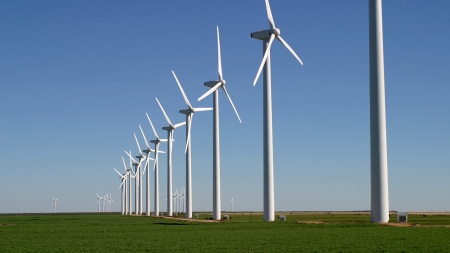High energy prices resulting from the war in Ukraine and other factors could help develop a more sustainable energy systemThe International Energy Agency (IEA) said in a report that global energy-related greenhouse gas emissions should peak in 2025.
The report looked at scenarios based on current policies and said coal use will recede in the coming years, demand for natural gas will plateau by the end of the decade, and rising sales of electric vehicles will drive the need for oil levels off by 2035 before tapering off slightly by 2050.
Total greenhouse gas emissions continue to rise each yearbut slowly, added the IEA’s 2022 annual report, released eight days before the start of the COP27 World Climate Conference in Egypt.
“With an abundance of wind, sun and other renewable energy, Africa can lead the world down the path of transition and open the way to energy sovereignty”
“The global energy crisis triggered by the Russian invasion of Ukraine causes profound and long-term changes that have the potential to accelerate the transition to a more sustainable and secure energy system,” IEA Director Fatih Birol said in the report. .
Though there are countries seeking to increase or diversify their supply of oil and gas –fossil energies that emit a lot of CO2–, many are studying accelerating structural changes towards clean energies, says the agency, a subsidiary of the Organization for Economic Cooperation and Development (OECD).
Europe’s “break” from Russian gas came with a speed “few people thought possible” even last year, the agency said.
And Russia “cannot” redirect its gas shipments that used to go to western Europe to other countries.

In none of the three scenarios studied by the IEA, Russian oil and gas export levels return to 2021 levels. In one of them, its weight in the world market for these hydrocarbons is even reduced by half by 2030.
For the first time, the three IEA scenarios identify a peak or plateau in the consumption of each of the fossil fuels (coal, gas, oil) that cause global warming, the study said, reported the AFP news agency.
In the central scenario, which is based on the commitments already announced by governments in terms of climate investments (“Inflation Reduction Act” in the United States, “Fit for 55” and “RePowerEu” in Europe, “Green transformation” in Japan. ..), global energy-related CO2 emissions would reach 37 billion tons in 2025 and then fall to 32 billion in 2050.
Despite these efforts, however, average temperatures are expected to rise by around 2.5C by 2100, which is “far from enough to avoid severe climate consequences,” the IEA said.
“A greater international effort is needed to reduce the worrying gap that is opening up between advanced economies and those of emerging or developing countries”
The agency once again underlined the need for massive investments in clean or low-carbon energy, such as nuclear, and acceleration in certain sectors, such as electric batteries (for cars) or photovoltaics.
On their central stage, these Investments must exceed 2 trillion dollars in 2030, and would have to rise to 4 trillion dollars to meet the conditions of the net-zero emissions scenario in 2050.

“A greater international effort is needed to reduce the worrying gap that is opening up between advanced economies and those of emerging or developing countries” in terms of investment in clean energy, says the IEA.
The founder and director of the Power Shift Africa group, Mohammed Adow, indicated the potential of this continent to contribute to this change in the energy model throughout the world.
“With an abundance of wind, sun and other renewable energy, Africa can lead the world down the path of transition and open the way to energy sovereignty,” he said after the report was released.

















